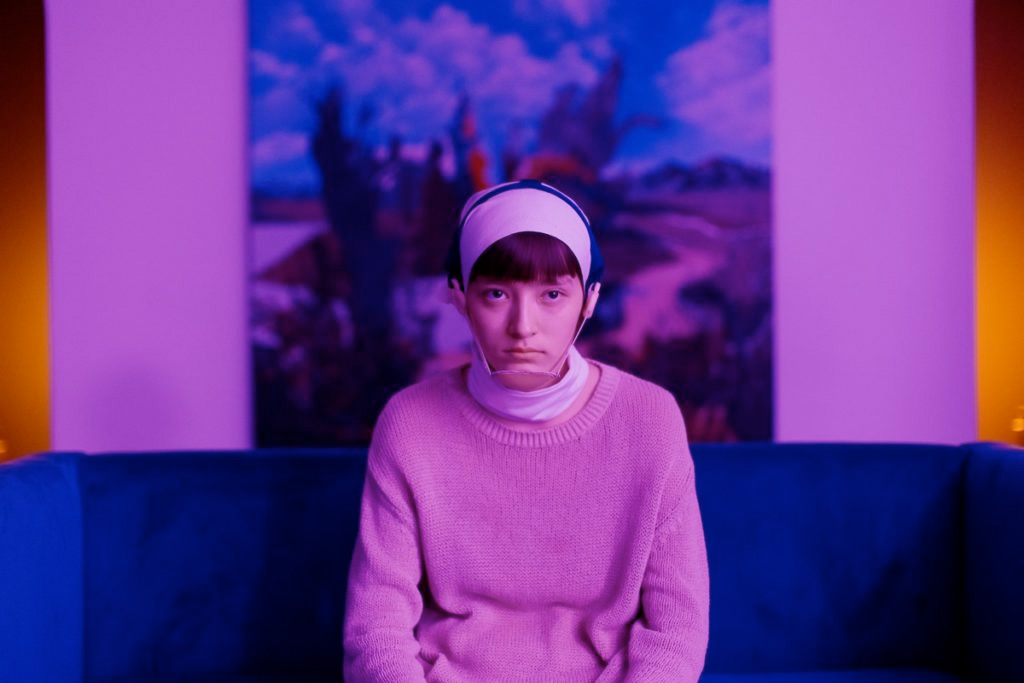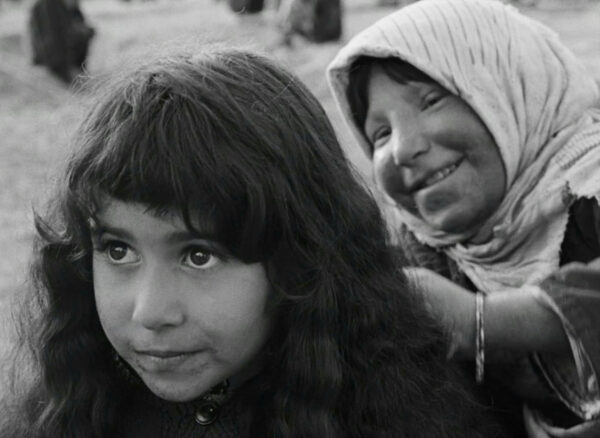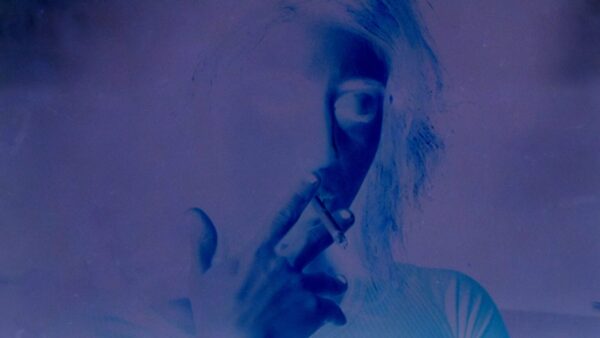Toothache, Heartache
Orthodontics
Competing in the prestigious Cannes short film competition this year, Orthodontics is as an anachronistic tale of youth and friendship.

Amitis and Sara, two poker-faced teenage friends, are sitting on the floor, perfectly still, their unblinking eyes locked into each other. Their bodies, symmetrically opposed and dressed in matching pastel colors, occupy the entire frame, breathing in unison. Bored out of their minds, as teenagers can be, or perhaps daydreaming about their future selves, the duo, by staying put and quiet, gradually steers the audience into this slow-burn of a film, already displaying subtle signs of eeriness. Speaking of which, we first get a glance at this fleeting uncanniness when Amitis finally stops staring at her friend to look out the window, offscreen, where she sees something peculiar: ‘‘A huge gear spinning and spinning in the sky’’, she describes calmly, as the mechanical sound of interlocking gears grows and grows fiercely in the distance.
Competing in the prestigious Cannes short film competition this year, Orthodontics is the latest Iranian short film to be hitting the festival circuit, and it is coming out of the mind of Mohammadreza Mayghani, the screenwriter behind the similarly quirky short Spotted Yellow, selected at Locarno last year. One could describe Orthodontics as an anachronistic tale of youth, friendship, and envy, all the while arguing, rightfully so, that it’s also much more than a weird coming-of-age drama.
While being under the pressure of orthodontic treatment and with the threat of jaw surgery looming over her head, Amitis is a young girl living with a sense of despair many teenagers have certainly felt in their lives: the shame of having to wear orthodontic gear in public. In her case, to add insult to injury, it is a particularly invasive piece of headgear she has to put on, coupled with a cup strapped to her chin—the kind of dental treatment you would imagine being used in the 50s. Understandably, every chance she gets to put her loathed chin cup and straps away, she does, and that’s mainly when she goes to her tennis lessons with Sara, in the outskirts of Tehran, next to a big empty stadium where they wander and spend most of their time off.
Dressed almost identically, the way the two girls are displaying similar behavior becomes more and more apparent throughout the film as we’re left wondering what it could all mean, or if it means anything at all. Both beginner tennis players, only mildly interested in their lessons, train, stretch, scream, dance, run, and play similarly, sometimes simultaneously. Everything they do, they do it together, instilling what seems to be a growing sense of frustration in Amitis. A sentiment that is only hinted to the audience, as she mostly keeps her thoughts and feelings locked behind her sealed lips. Every time she lays her eyes on Sara, it could be argued that she’s seeing a better version of herself: a free one, without the damn dental apparatus!
Does Sara know how antagonizing Amitis’ mother is when she insists that she keeps her chin cup on, even in the comfort of her bedroom? Does she know how painful and uncomfortable it is to get your teeth cast at the doctor’s office? Certainly not and Amitis, weary of being submissive and behaving the way she’s expected to, decides to act upon it. As the film’s logline puts it bluntly, in a sudden turn of events and in the midst of the third act, ‘‘she does something strange’’. And, without giving away too much, she does put herself and Sara in an uncomfortable-to-watch situation that has its share of consequences, but what really comes out of it, is just a long-overdue sense of ownership over her life choices. She is finally the hero of her own journey. Even if it is a twisted one.
However, it is important to note that the strangeness of it all is not to be viewed as a mere tool used to convey an emotional response to the audience. The sense of oddness, generally speaking, comes from a lack of context, and that is exactly where Orthodontics willfully lays its narrative foundations, whereas it suggests many more things than it tells. One of the reasons that could explain this, lies in the words of the filmmaker himself. According to him, the series of eerie-like sequences that are displayed in this short are loose reenactments of real-life untold events he himself experienced, having had to wear an orthodontic headgear in his childhood. Events that were “in contradiction with taboos and hidden codes of [Iranian] society. Codes which will always stay untold”.
What Amitis is going through is, at its core, universal. This is a story about a teenager who doesn’t feel she belongs, which makes her feel ashamed of herself, and who is willing to break free from social norms and conventions to regain control over her feelings and her body. The gray areas where Iranian taboos are hiding can instead be interpreted by the ways Amitis interacts with her surroundings. She feels out of place, out of touch—as if she’s from another world. Yet, as we follow her every step, the more we dive into the film, the more we feel it is her environment, the backdrop, and the other characters that seem anachronistic and artificial. Some props, set designs, and costumes are inexplicably vintage. Interior shots are flooded with colourful non-natural lights. The few extras on screen act almost robot-like and there is a short scene where Amitis plays a game of Sims, a life-simulator as sterile as the one she actually lives in. By the end, it seems evident that this empty shell of a world is unfit to shelter young girls like her, and what’s most striking about this is that despite it being odd, it is clearly our own.
The intentionally blurry outlines of its narrative structure and the big picture, reminiscent of what actual daydreaming feels like, may remain incomplete to some. Yet, even if the inner meaning is cloaked under minimum context, ever so slightly out of reach like Amitis’ own concealed thoughts, one can feel that it is vibrant, conflicted and covered in multiple layers of interpretation. In that regard, this is exactly where Mayghani’s minimalistic use of blocking and editing is most effective. The audience has much space to fill and many dots to connect, which makes the viewing experience, supported by an impressively immersive soundscape, a truly mesmerising one. Is Amitis nothing but a freak girl, or are we too self-absorbed to realise that we are the ones acting strange?




There are no comments yet, be the first!